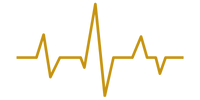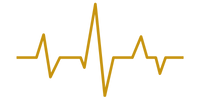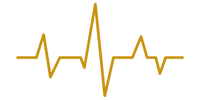Introduction
Introduction By: Patrick Nolan
Welcome back to Decode Your Diagnosis.
I’m Patrick Nolan, and today we’re heading into one of the most practical chapters in the Titan journey so far, Chapter 8: Practicing Dynamic Harmony.
If you’ve ever tried to “get your life back in balance” and found the whole idea impossible… this one’s for you.
In this episode, we unpack why balance is a myth, how Dynamic Harmony actually works, and what it looks like when real Titans learn to adapt, with intention, in a life that won’t stop shifting.
This isn’t about perfection. It’s about progress. Let’s jump in.
Practicing Dynamic Harmony
Written By: Paul Cobbin
Narrated By: Paul Cobbin
Dynamic Harmony plays a vital role in reducing stress and supporting long-term health within Decode Your Diagnosis. Because of its wide-reaching impact, it deserves a chapter dedicated entirely to its exploration.
What Is Dynamic Harmony?
Before we go any further let’s reflect on its definition. Dynamic Harmony is the interplay between your internal Elements (Mind, Body, Soul) and external Forces. It’s the ongoing process of recognizing shifts in your environment, and within yourself, and responding with intention to maintain alignment.
At its core, Dynamic Harmony is about awareness and action. Awareness helps you identify when one Element is out of sync, and action gives you the power to realign. This practice acknowledges that life is fluid, and true resilience lies in the ability to adapt gracefully to changes, setbacks, and growth opportunities.
For example, imagine you are managing chronic fatigue (Body) while also feeling emotionally disconnected from loved ones (Soul). Dynamic Harmony would prompt you to observe these signals, explore their causes, and take intentional steps such as adjusting your physical activities and prioritizing quality time with supportive relationships to restore some resemblance of balance.
Let me clarify that we’re not striving for balance in the traditional sense. Dynamic Harmony is not ‘balance’ because balance is a momentary concept that is not sustainable. Think back to your childhood and how hard it was to get that sea-saw to stop in the middle with both sides level, and when it finally did, the slightest movement saw it quickly fall to one side or the other. Come forward into adulthood and the classic example most of us have considered at some time in our lives, work-life balance. If you found that then you are an amazing unicorn.
For these very reasons, while travelling your Alignment Pathway always aim for dynamic harmony, not balance.
Practical Steps to Cultivate Dynamic Harmony
Recognizing the Signals
Dynamic Harmony begins with awareness by paying attention to the cues your Mind, Body, and Soul are sending. These might include:
Emotional Signals: Stress, irritability, or lack of motivation.
Physical Signals: Fatigue, tension, or disrupted sleep.
Spiritual Signals: Feeling disconnected from purpose or joy.
By learning to identify these signals early during the prostate disease diagnosis, I was able to take proactive steps to address them. After repeatedly pushing myself to try and engage my previous identity, prior to the cancer, I realised it would be impossible, that I was being too hard on myself and suffering the consequences. Once I acknowledged the fact that I couldn’t turn back, and accepted I would wear incontinence pads and be impotent, I started to set the main concerns aside and identify subtle signs before they escalated:
Mental strain: When I felt “uptight” before full-blown stress, I knew it was time to increase meditation (yes, meditation not medication, hehehe).
Physical fatigue: The first twinges of exhaustion meant I had to cap my daily physical exertion at two hours.
Spiritual unrest: If I felt disconnected, I’d dedicate extra reflection time to recalibrating my sense of purpose.
These small adjustments prevented me from hitting major crashes and allowed me to sustain long-term progress.
Recalibrating Through Action
Once I’d recognized misalignment, the next step was taking intentional action to restore balance. It’s important to start small and focus on one Element at a time.
Mind: Practice mindfulness exercises, like deep breathing or gratitude journaling.
Body: Prioritize hydration, balanced meals, or gentle movement.
Soul: Engage in activities that bring joy or connect you to your values, such as art, nature, or meaningful conversations.
Recalibrating isn’t about overhauling everything at once, it’s about making strategic, small adjustments to regain stability.
For example, there was a time during the early stages of my heart disease diagnosis when I noticed my deep sleep quality declining and research into deep sleep suggests this is the time when the body repairs. I definitely needed to allow my body to repair so it was then I decided it was time to seriously recalibrate my lifestyle to improve sleep by:
Adjusting bedtime: By returning to a sleep schedule that focused on natural biorhythms for deep sleep, by moving forward lights-out to 9:00PM – 9:30 PM and wearing eye masks and meditating before sleep to flush the mind.
Shifting meal timing: Following the “eat breakfast like a king, lunch like a prince, dinner like a pauper” principle reduced digestion interference.
Eliminating caffeine and sugar after 3 PM: This small change dramatically improved sleep depth.
By making these targeted adjustments, I was able to restore my sleep quality to over 90%, ensuring my body could properly repair and recover.
Building a Supportive Environment
It requires surrounding yourself with people, tools, and practices that reinforce your wellbeing. While future chapters will explore some of these resources in detail, what’s essential right now is recognizing the value of support and beginning to shape an environment that sustains your growth.
Sustaining Dynamic Harmony isn’t just about personal habits. It’s about aligning your surroundings and relationships with your goals so that your progress is supported, not sabotaged.
A classic example of the power of your support network came in my first year with CAD, I struggled to balance career ambitions with health needs. I was still trying to prove I could do it all, even though stress was actively working against my recovery.
The turning point? Unwavering support from my wife.
She was there when I had to make the hard decisions, like stepping down from my CEO role and rethinking long-term professional commitments. Her steady presence helped me navigate one of the most difficult transitions of my life.
A strong support network is invaluable. Having at least one person who understands your goals and holds you accountable can make all the difference.
Creating a Daily Realignment Routine
Incorporate small daily rituals to maintain alignment. For example:
Morning check-ins: Spend 5 minutes reflecting on what your decoding needs today.
Evening gratitude: Note one way you practiced Dynamic Harmony during the day.
Before bed: offload your thoughts into your journal for future reference.
The Role of Joy in Dynamic Harmony
One of the most overlooked aspects of maintaining Dynamic Harmony is the role of joy. For years, I believed that my health journey was about discipline, structure, and sacrifice. What I failed to recognize was that without joy, sustainability is impossible.
I realized this when I noticed how much energy I had after engaging in activities that genuinely brought me happiness like listening to music, writing, and even rewatching classic films from my youth. These weren’t just hobbies; they were key contributors to my well-being.
I started applying this principle in practical ways:
Instead of rigidly sticking to a set fitness routine, I introduced long walks in the bush that felt natural and restorative.
Rather than just focusing on nutrition from a health perspective, I began cooking meals that brought me comfort as well.
I allowed myself to laugh more, engage socially, and prioritize joy as a fundamental part of my daily routine.
What I discovered was profound: joy is regenerative. It acts as a natural counterbalance to stress, helping to restore the energy we expend managing our health. Without it, burnout is inevitable.
True Dynamic Harmony isn’t about perfection, it’s about ensuring that Mind, Body, and Soul are all nourished, including through joy. Recognizing the importance of happiness in my health journey transformed not just my outlook but my ability to sustain long-term well-being.
The Art of Balance
Dynamic Harmony isn’t about achieving a perfect balance, it’s about developing the flexibility to realign when life pulls you in different directions. For Titans navigating a diagnosis, this concept is especially critical. Life will throw unexpected Forces at you, and Dynamic Harmony helps you adapt, pivot, and thrive amidst the chaos.
By integrating your Mind, Body, and Soul with the Forces of life, you can cultivate resilience and growth, even in the face of adversity. Unlike rigid perfectionism, Dynamic Harmony embraces the unpredictability of life, offering a framework for continuous recalibration.
Exploring Dynamic Harmony
The Role of Reflection
Dynamic Harmony operates through regular self reflection. These reflections after we experience changes resulting from feedback loops when one Element compensates for another, creating signals that something needs attention. For example:
Emotional Signals: Feelings of overwhelm or irritability might suggest your Mind is overloaded and could benefit from mindfulness practices or breaks.
Physical Signals: Persistent fatigue or muscle tension may indicate a need to reassess your Body’s needs, such as sleep or nutrition.
Spiritual Signals: A sense of emptiness or lack of direction may highlight the need to reconnect with your Soul’s purpose.
Feedback loops serve as reminders to pause, reflect, and adjust. The sooner you recognize these signals, the easier it becomes to make small, meaningful changes before imbalance escalates.
Dynamic Harmony vs. Perfectionism
One common misconception is that achieving harmony means maintaining a perfect balance at all times. In reality, Dynamic Harmony is the opposite of perfectionism. It’s about flexibility, not rigidity; growth, not stagnation.
Consider a tightrope walker: their goal isn’t to stand still but to keep moving forward while making constant micro-adjustments. In the same way, Dynamic Harmony teaches you to embrace imperfection and focus on progress rather than unrealistic ideals.
The Role of Flexibility
Dynamic Harmony is supported through maintaining flexibility and encouraging adaptability, intention, and self-reflection.
Adaptability
Adaptability is the ability to adjust your actions, expectations, and mindset in response to changing circumstances. It’s what allows you to pivot when life doesn’t go as planned.
Example: If your usual fitness routine becomes unsustainable due to a flare-up, adaptability might mean finding gentler activities like yoga or stretching to stay active without overexertion.
Intention
Intention is about acting with purpose, even when life feels chaotic. It’s the anchor that keeps your adjustments aligned with your values and goals.
Example: When work demands increase, intention helps you prioritize family dinners or self-care rituals to maintain connection and resilience.
Self-Reflection
Self-reflection is the practice of regularly checking in with the process of decoding Mind, Body & Soul to identify what needs attention and how to recalibrate. It allows you to track patterns, recognize misalignment, and celebrate progress.
Example: Journaling about your energy levels or emotions can reveal trends that help you make informed adjustments to your routine.
Embracing the Flow
Dynamic Harmony is the art of living in alignment with your decoding amidst the ebb and flow of life. It’s not about striving for a perfect balance but about cultivating the awareness, flexibility, and intention to adapt as needed.
By integrating the principles of Dynamic Harmony into your daily life, you can build resilience, foster growth, and navigate your Pathway with confidence and grace. Remember, the goal isn’t to stop life’s waves but to learn how to ride them with purpose and poise.
Now that you've learned how to listen to your inner compass and shift with life's tides, it's time to explore the deeper rhythm that governs your journey: time. In the next chapter, we'll introduce you to the Knife Edge Of Time as a way of living intentionally on the Knife Edge of Time, where your past informs your growth, your present anchors your actions, and your future draws you forward with purpose.
Key Insight
Dynamic Harmony is not about achieving balance, it’s about adapting with awareness and intention when life shifts. Progress is the goal, not perfection.
Practical Reflections
Signals
What recent emotional, physical, or spiritual signal has stood out to you?
Recalibration
What is one small change you could make today to realign your energy across Mind, Body, or Soul?
Joy
When was the last time you felt joy and with that in mind, what activity could you introduce or reintroduce into your life that feels deeply nourishing?
Fama’s Sidebar:
Embracing the Flow
Dynamic Harmony isn’t about getting everything perfect, it’s about learning to adjust when life shifts unexpectedly. Think of it like sailing a boat: you can’t control the wind, but you can adjust your sails. The signals your Mind, Body, and Soul send to you are like a compass, guiding you to recalibrate when needed.
Closing Comments
With: Patrick Nolan
That was Chapter 8 of Decode Your Diagnosis, and as always, thanks for spending time with us.
If this episode helped you notice where you’re stretched thin, or gave you one idea to recalibrate how you respond to stress, take a second to share it with a fellow Titan.
As always, the companion tool to this ChapterKey release of Decode Your Diagnosis is the Reflections Notepad and it’s waiting for you to download for free from this link.
Until next time, stay in the moment, keep decoding, never stop aligning to begin thriving and remember: you’re not doing this alone.





